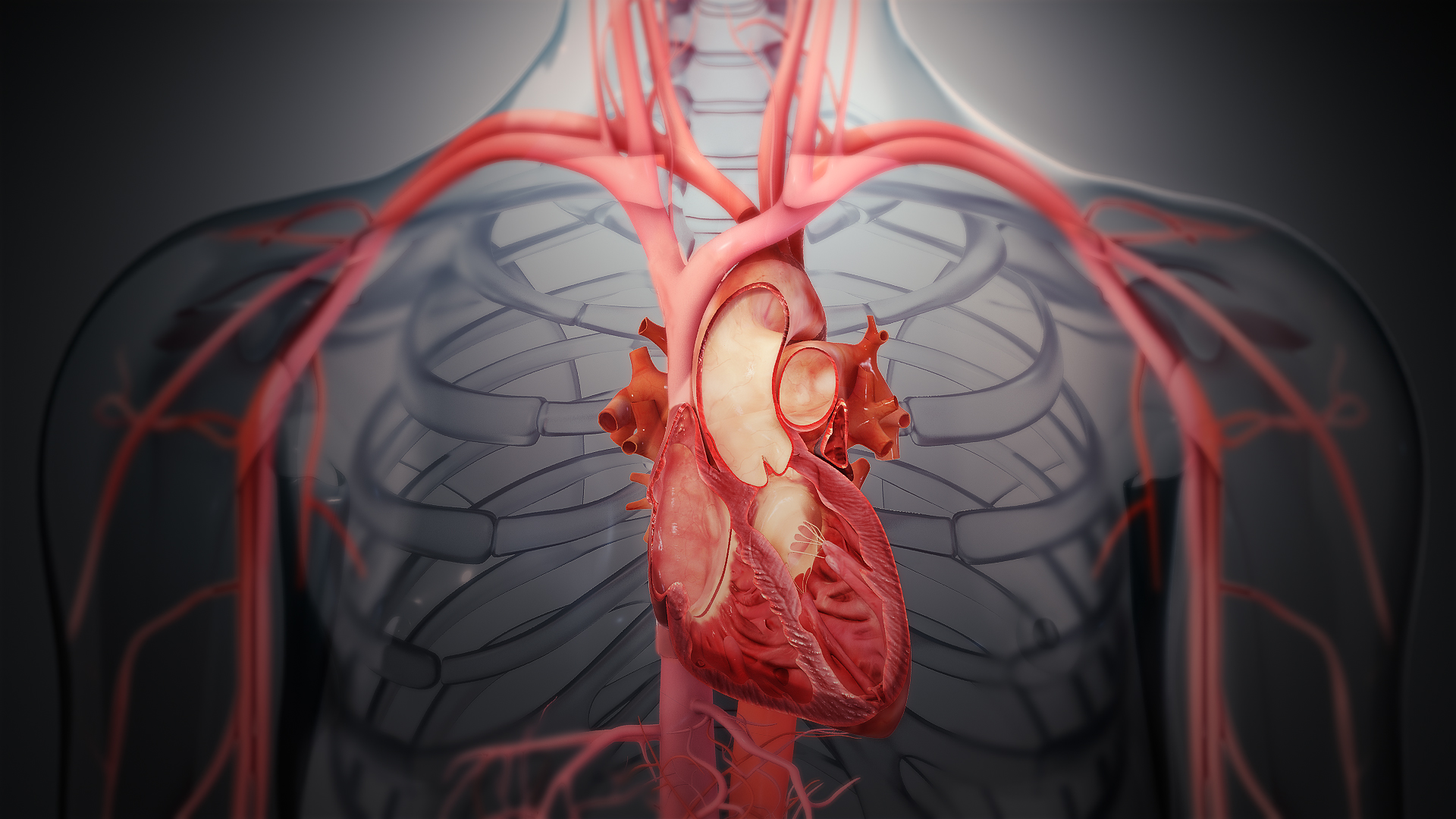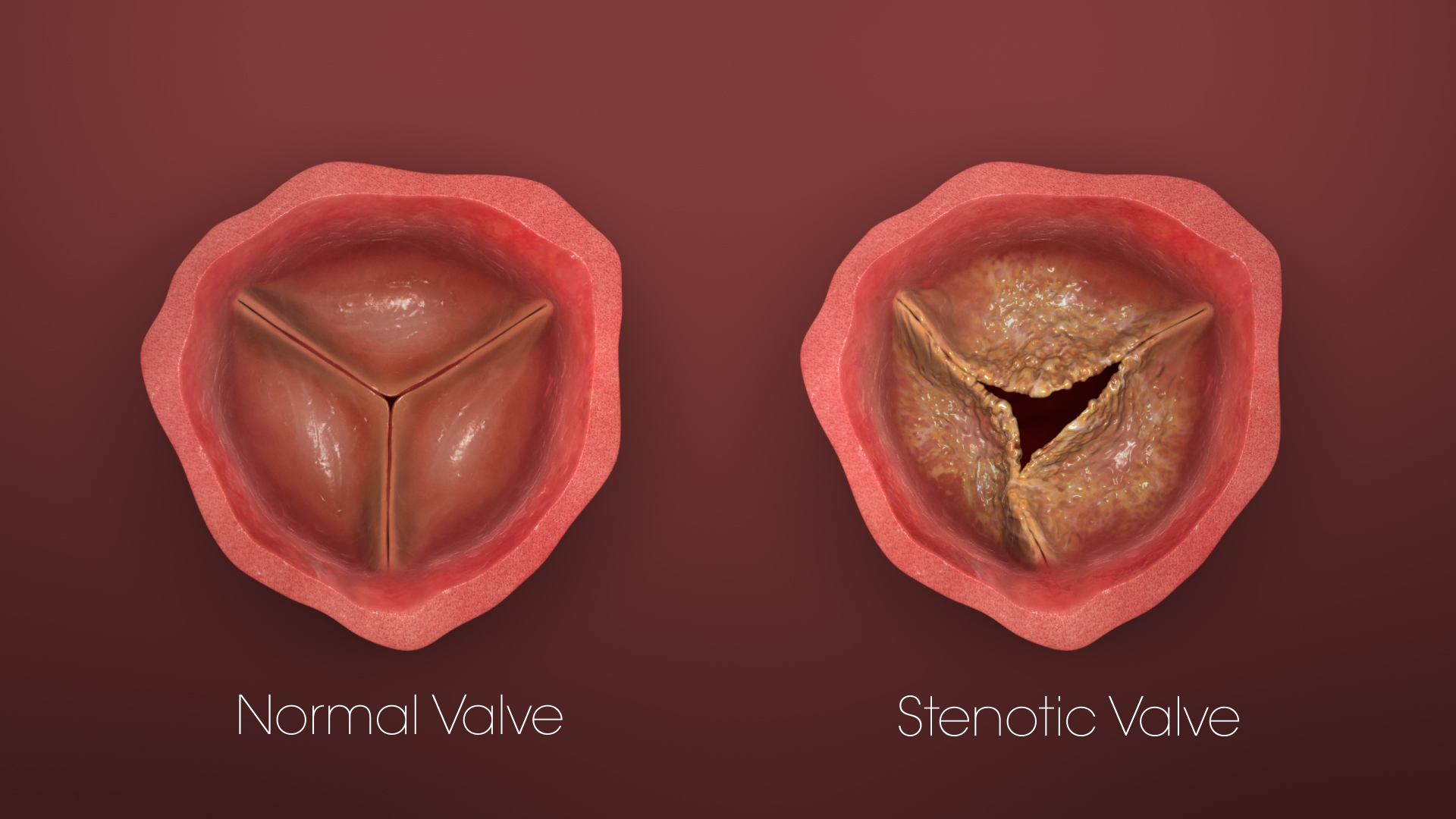Problems of heart valves can be age-related, can result from disease such as rheumatic fever or infection (endocarditis) or a defect present at birth. When the valves don't open or close completely during each heartbeat, the heart muscle has to pump harder to keep the blood flowing and prevent heart failure.
- Mitral valve prolapse in which the prolapsed valves can sometimes start to leak.
- Leaky or regurgitant valve condition is known as ‘valve regurgitation’.
- Aortic stenosis is a narrowing of the aortic valve opening that restricts the blood flow from the left ventricle to the aorta. Although some people have aortic stenosis because of a congenital heart defect, this condition more commonly develops during aging as calcium deposits restrict the amount of blood flowing through the valve.
Artificial valve replacement has been around since the 1950s. But a number of challenges have prevented effective treatment of valvular disease using artificial valves. Firstly, installation requires risky open heart surgery. Also, initial generations had issues with biocompatibility and progressed into a condition called prosthetic valve disease. While artificial valves have evolved greatly since the first synthetic heart valve was implanted in 1952, the latest generation of transcatheter heart valves represents a major leap in valve repair.
Risk vs reward – the surgeon’s dilemma
A diseased heart valve is a mechanical problem that cannot be fixed with medication alone, and surgery is often needed to repair or replace the damaged valve. If the faulty valve never gets looked at until the patient realizes it’s a serious medical problem, the diseased valve may weaken the person so much that an open heart surgery to fix the problem becomes too risky.
Traditionally, once a patient is diagnosed with a valve defect, physicians face a dilemma – risk open-heart surgery and its potential complications, or try and maintain patients with a regular drug regime such as beta-blockers or ACE inhibitors. As a result, surgical repair is normally recommended only when there is an immediate risk of potentially life-threatening cardiovascular disease.
This had impaired the widespread adoption of artificial valve repair. That was until the 1990s brought new types of valves that allowed for new surgical methods.
Less invasive options than surgical replacement can now be considered for certain patients needing aortic valve replacement, according to updated recommendations published in American Heart Association and the American College of Cardiology.
Valve repair — preserves the patient’s valve and leaflets. Sometimes repairs require a minimal surgery procedure and other times repairs need a more extensive surgery. Repair is most often possible for mitral valve regurgitation and tricuspid valve regurgitation.
Valve replacement — minimally invasive surgical procedure repairs the valve without removing the old, damaged valve. Instead, it wedges a replacement valve into the aortic valve’s place. The surgery may be called a transcatheter aortic valve replacement (TAVR) or transcatheter aortic valve implantation (TAVI).
Transcatheter heart valves – the grow to fit approach
The treatment for aortic stenosis traditionally required open heart surgery to replace the damaged valve, but the development of TAVR has become an option for some patients.
Researchers theorized and tested expandable valves that could be delivered to the point of installation through a catheter. These valves would be collapsed and compact enough to be pushed through or via a catheter, and then expanded in situ to fit.
TAVR procedure is fairly new and is FDA approved for people with symptomatic aortic stenosis who are considered an intermediate or high risk patient for standard valve replacement surgery.
Suddenly, open-heart surgery became akin to leech therapy of yesteryear, potentially effective but with its own intrinsic mortality. Not surprisingly, transcatheter heart valves have been shown to significantly increase life expectancies. 1
Advantages of transcatheter heart valves
For the most part, the valves used in transcatheter valve replacement carry the same properties as other artificial valves. They have the same built in evolution to prevent prosthetic valve disease and issues with biocompatibility. However, without the need for open-heart surgery, valves deployed through a catheter cost less and have a quicker recovery period. In addition, studies have reported less post-procedural complications such as valve fractures and infections. A recent 5-year partner trial has indicated a lower mortality rate at 28%, compared to the above 40% rates prior to 2011. A report published in 2011 shows that aortic stenosis patients over age 60 have increased life expectancies after undergoing transcatheter aortic valve replacement. 2 Some cases even indicate improvement in the quality of life.1
The future of heart surgery
Transcatheter heart valves have become a treatment of choice for many Americans, because of its established safety and efficacy. The benefits of this type of surgery can be life-long and indirect. Should patients need to undergo major heart surgery for other conditions later in life, the less intrusive transcatheter approach increases their ability to bear subsequent procedures. Transcatheterization has been used in many other surgeries, including other coronary interventions. Angioplasties today are exclusively done through a balloon catheter or similar inflation method. Simply put the future of heart surgery, and indeed, of all surgery is towards minimally invasive methods that require very small incisions, or can use the body’s own vasculature to reduce time and cost, and improve patient outcomes. And with continuing improvements like robotic catheters, transcatherization based surgeries will continue to remain at the forefront of surgical technique for some time to come.
References
1. Futility, Benefit, and Transcatheter Aortic Valve Replacement2. Transcatheter versus surgical aortic-valve replacement in high-risk patients.

A Tour Inside The Heart
Virtual Reality or VR Medical Animation has already made it possible to not just ‘view’ but even ‘be’ in fabricated environments and experience them as real as possible. Using this tech, we’ve designed an animated 360 degree guided tour inside the human heart.Read More..










